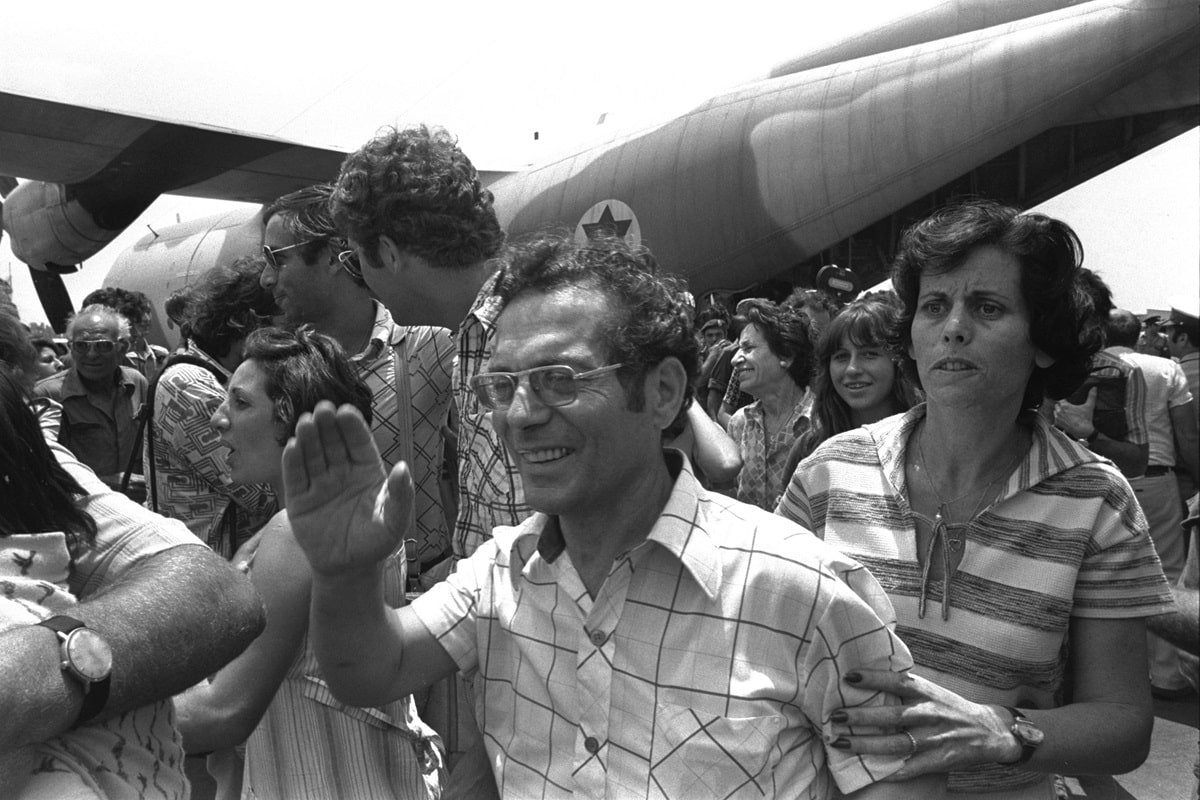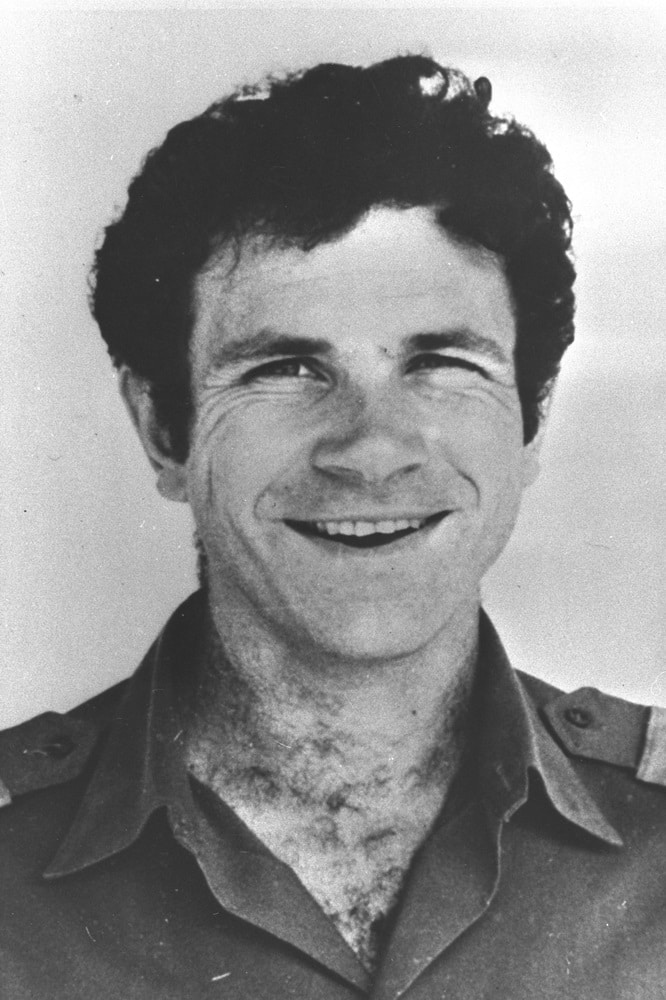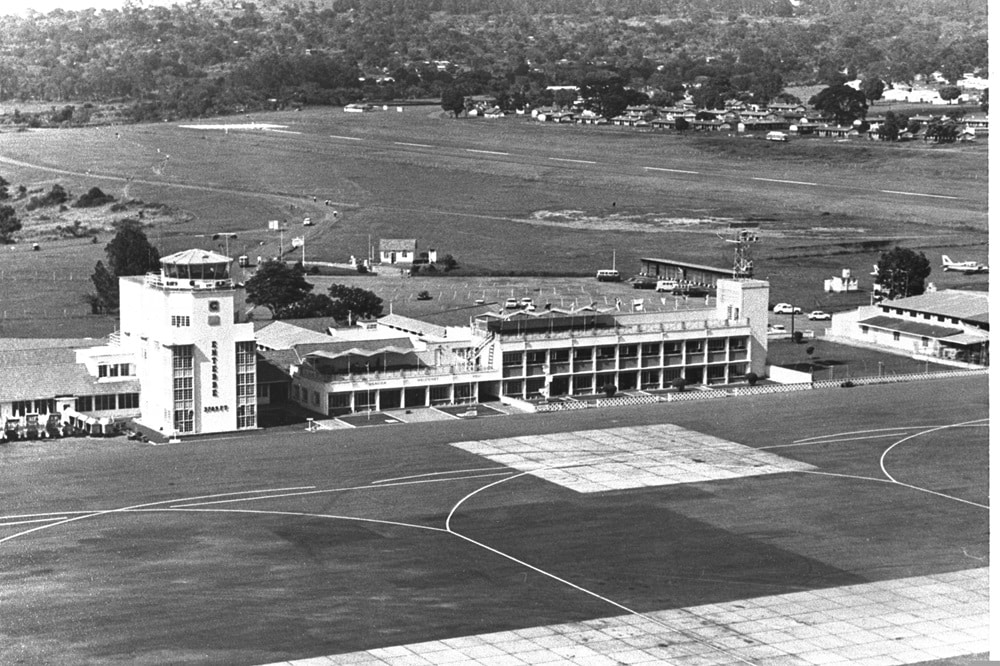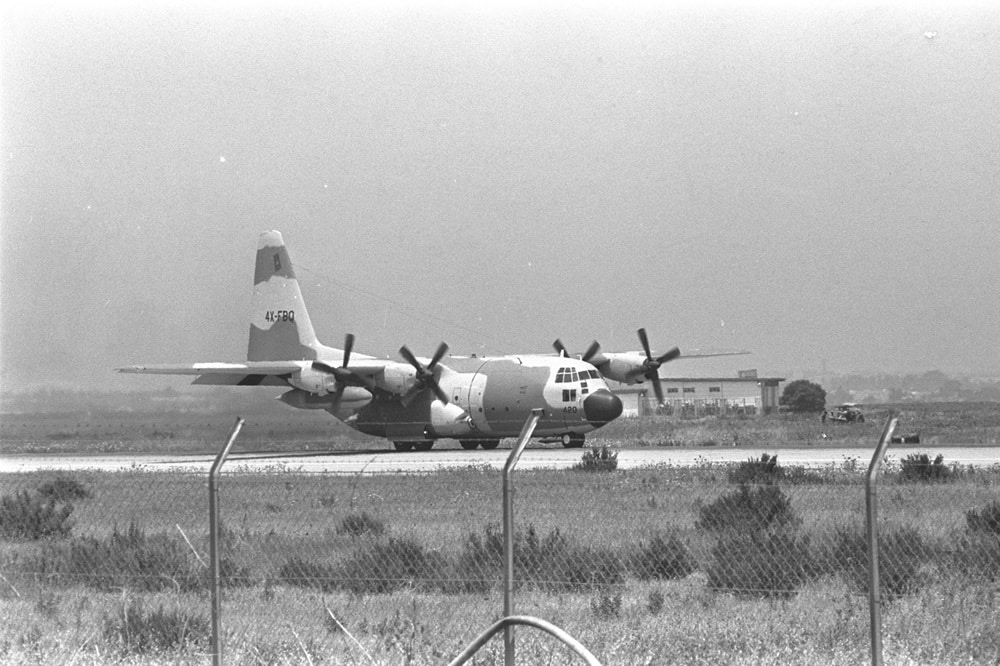
On June 27, 1976, an Air France flight with 248 passengers – mainly Israeli and Jewish – and 12 crew members departed from Ben-Gurion airport in Israel to Paris. The plane landed for a stopover in Athens, where four terrorists – a male and female German nationals and two Palestinian men, members of the Popular Front for the Liberation of Palestine (PFLP) – boarded the flight. Shortly after takeoff, the terrorists hijacked the airplane and ordered the captain to change the flight’s course to Benghazi in Libya, where the plane was held on the ground for several hours for refueling and joined by an additional three terrorists. Libyan leader, Muammar Gaddafi refused to allow the plane to remain on Libyan soil and the plane took off towards Uganda, there it landed in the Entebbe International Airport on June 28. In Entebbe, the hijackers were joined by yet another six, armed Palestinians to assist in guarding the hostages as well as some 100 Ugandan troops, under the auspices of Uganda ruler Idi Amin. The hijackers barricaded themselves and the hostages in one of the old unused terminals of the airport and stated that they rigged the entire area with explosives. Later, the terrorists singled out the Jewish and Israeli passengers and isolated them in a separate room in the terminal.
Two days after the hijacking, most of the non-Jewish and non-Israeli passengers were released. They offered the captain and crew to join the released hostages, but they chose to remain with their passengers that were kept in Uganda, bringing the headcount of hostages to 117: 105 passengers and 12 crew members.
Ugandan President, Idi Amin, lent his support to the hijackers and allowed them to use the Entebbe terminal to hold the hostages. The terrorists gave the State of Israel an ultimatum wherein they demanded the release of 53 terrorists – so called “freedom fighters”, most of which were held in Israeli prisons – by July 1, otherwise they would commence with the execution of all the hostages. The terrorists further demanded a $5 million ransom from the French government for the return of the Air France airplane. The demands of the hijackers were publicized in Israel and the families of the hostages sent a letter to Prime Minister Yitzhak Rabin, imploring he give in to the demands of the terrorist, claiming that “human life is more important than ideals”.
Albeit the sympathy on part of the government to the families’ cause, it was reluctant to accept the terrorists’ demand in the concerns that such a move would encourage more terror hijackings in the future. Eventually, the voices demanding military intervention were heeded and Rabin ordered a military operation to release the hostages.

With precious little time and intel: preparing for the operation
In order to buy some time, Israel agreed to negotiate with the terrorist on the release of the hostages, thus the ultimatum was extended to July 4.
During that time, IDF Intelligence Corps scrambled to gather and analyze the necessary intel. Since Uganda did not have diplomatic relations with Israel at the time, but was not considered a terror-supporting state, Israel was short of intel on the country.
To gather as much detailed information as possible on Uganda, Intelligence consulted with Baruch Bar-Lev, who was the last Israeli military attaché to the country and was known to have warm relations with Idi Amin. The Israeli Mossad sent an undercover operative on a civilian airplane to take air photos of the Entebbe airport and the terminal where the hostages were held. Additionally, crucial intel came from one of the released passengers – an Israeli with a duel British citizenship – who feigned having a miscarriage and was released by the terrorists. Upon arriving in England, she shared initial intel on the hijackers with the British Intelligence, reporting what the terrorists stated to the hostages and describing the atmosphere in the airplane at the time of the hijacking. MI6 delivered this information to Israeli Intelligence, which was now able to determine that the hijackers were members of the organization of Wadi’ Haddad, former operations officer of the PFLP.
More crucial information came from another released hostage – a passenger with dual Israeli-French citizenship and a military background, who was able to impart impressively accurate information on the weapons held by the hijackers. Furthermore, Israeli construction firm Solel-Boneh, which built the Entebbe terminal on the 60s – was instrumental in building a replica of the terminal on which the commando forces trained.
Thanks to these efforts and more, the Israeli Intelligence was able to form an accurate picture within a relatively short time and gather enough intel for a military operation to release the hostages.

The decoy Black Mercedes: the unfolding of the operation
On noon July 3, the day before the expiration of the new ultimatum, four IAF Lockheed C-130 Hercules planes took off from the southern Sinai city of Sharme-el-Sheik towards Entebbe airport. Onboard were 176 elite Matkal recon commandos, and paratrooper and Golani troops. Due to the urgency of the operation, the planes took off before the government’s final green light, which came when the force was already airborne. Due to the long flight-rout, Israel had with great effort, obtained the permission of Kenya to land the planes in Nairobi, for refueling. In a sheer stroke of luck, despite intel on the imminent attack leaking from Kenya’s air force to the Ugandan military and to Idi Amin – the latter did not take the news seriously and rejected it as mere rumors.
On the night of July 4, the planes landed at Entebbe International Airport. For the purpose of deception, the forces unloaded jeeps and a Mercedes car identical to the one driven by Idi Amin, who would visit the hostages daily, and thus were able to drive towards the building where the hostages were being held, posing as the Ugandan president’s convoy and security force.
According to the plan, the force was to drive directly to the hostage terminal, however, on the way encountered two Ugandan soldiers, whose suspicions arose as they were informed that Amin had swapped his famous Black Mercedes for a new white model. Head of the commando force, Lieutenant Colonel Yoni Netanyahu, ordered them shot. The noise from the firing eliminated the element of surprise for the Israeli force and they had to make the rest of the way to the terminal under fire.
Despite these disruptions, the force successfully reached the terminal, eliminated the terrorists and freed the hostages.

Almost all home: outcome of the Operation
Within 24 hours, the seven hijackers and some 20 Ugandan soldiers were killed, and the hostages were transferred to an evacuation plane and flown to Israel. Despite the impressive success, the Israeli force did not emerge unscathed – commander of the commando force, Yoni Netanyahu – older brother of who was to become Israel’s Prime Minister, Benjamin Netanyahu – was killed in the exchange of fire, and it was later decided to name the operation after him – “Operation Yonatan”. Four Israeli hostages were also killed: Jean-Jacques Maimoni, Pasco Cohen, and Ida Borochovitch, who were killed in the crossfire during the operation, and another– 74-year-old Israeli Dorah Bloch, who was murdered as an act of cruel revenge at the local hospital where she was sent prior to the operation.
The rest of the fighters, rescuers and hostages safely arrived in Israel, and were received at Ben-Gurion Airport with a moving reception. The operation, which was conducted under pressure of time and with very little intelligence, made a strong impression around the world, proving once again the strength and prowess of the Israel’s defense and security forces and the unwavering fortitude of the Israeli spirit. The daring operation eventually became part of Israel’s popular culture with the release in 1977 of the Israeli film “Operation Entebbe” starring famous Israeli singer and actor Yehoram Gaon as Yoni Netanyahu. In that same year, NBC released the television film, “Raid on Entebbe” and the heroic tale was later adapted in 2018 to a film titled “7 Days in Entebbe”.






